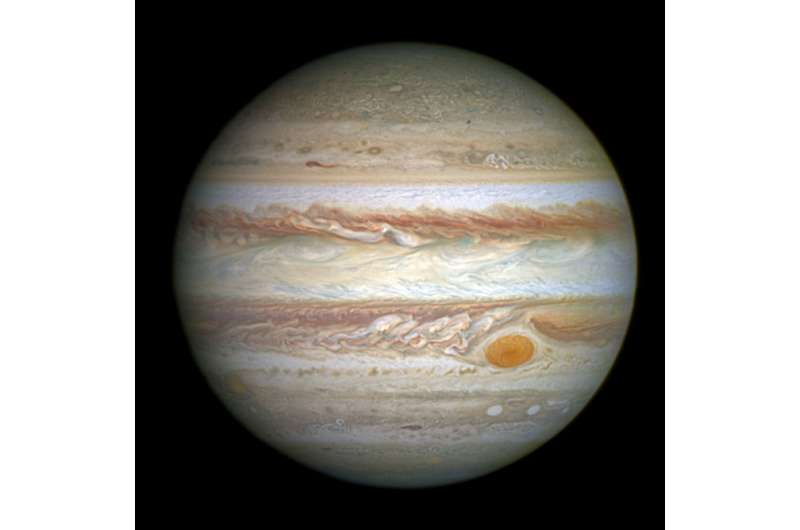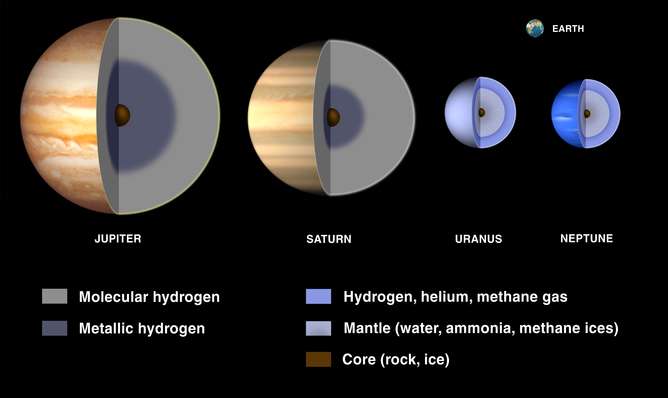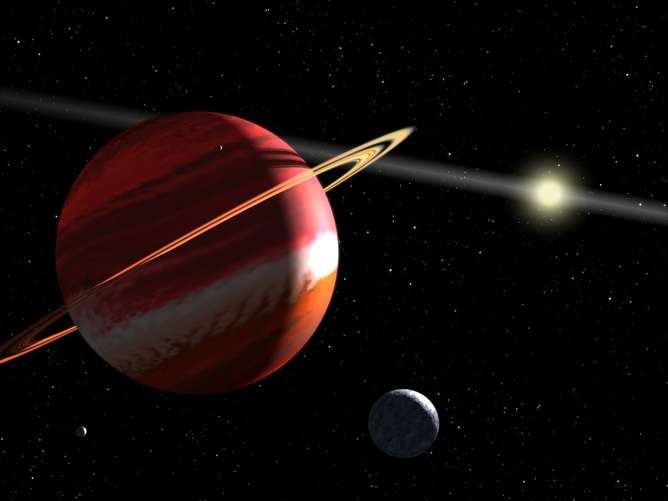How did Jupiter and Saturn form? The answer may lie with the humble pebble

After many decades of exploring the solar system, we still have much to learn about our closest celestial neighbours. One of the biggest remaining puzzles is how the giant gas planets managed to form in the early days of the solar system, with the leading theories suggesting that they could have formed by repeated collisions between objects about ten times smaller than our own moon.
Now a new model suggests they could have developed with the help of slowly forming, relatively small pebbles – a discovery that may help us answer a number of other questions about the planets.
There is a lot we actually do know about our solar system. The sun and its planets formed out of a cloud of gas and dust about 4.5 billion years ago. We can even watch this process in motion in other places in our galaxy. We also know that, once the pieces which eventually form the planets get to a certain size, they can grow by their gravitational pull on smaller objects – trapping them in unstable orbits before they eventually crash into the surface. Violent growth, but growth nonetheless.
But there is a big gap in the understanding of this process, and it's how a disk of rotating gas and dust can possibly lead to the number of large and small planets that we see today. This is exactly the question that the new paper is trying to answer.
Over the past decade, scientists have proposed a number of models starting with the assumption that the gas and dust disk forms a bunch of small objects very quickly. If you run a simulation of this scenario (termed the "standard model" in the new study), you find that the dust is able to roll up into clumps, and from there into denser and denser objects until you wind up with something a few centimetres to a metre across. These objects, dubbed "pebbles" (yes, that's the technical term) can all grow quite quickly and rapidly reach the mass of the Earth.
The problem is that if you assume that this is constantly happening, you wind up with way too many of these Earth-sized proto-planets. And having too many objects would result in them scattering off each other – ending up in crazy orbits that are no longer aligned with the disk surrounding the star.

The disk, however, is the only place where there is a lot of material for these proto-planets to continue growing, which they would need to do in order to form planets that look like Jupiter and Saturn. But in this model, their crazy orbits no longer take them through that material, meaning they stop growing. In this way our model solar system stalls out with a bunch of Earth-sized objects, and no gas giants.
This is a problem for our understanding of how the gas giants formed, because if you always end up forming 100 proto-Earths and no gas giant planets, then the model is clearly incomplete.
We also know that our solar system isn't particularly unique; especially with the treasure trove of information that the planet-hunting Kepler satellite is feeding us, there are an increasing number of solar systems which appear to have a few giant planets further out, and smaller, (potentially) rocky planets closer in, just like ours. Cracking how gas giants form is therefore increasingly relevant.
Mystery solved?
So what is the solution to these problems? The new model suggests that instead of the disk of gas and dust forming into pebbles rapidly, the proto-planets might build up more slowly. And indeed, if the pebbles form less quickly, then the objects which grow from them are both less numerous and take much longer to grow.

The authors ran another simulation, this time with a slow addition of pebbles into the mix over time. This means that instead of the disk going granular all at once, the pebbles form gradually, here and there. This change allows the largest proto-planets to grow to much larger sizes. With this new model, the smallest objects are either captured by the larger ones, or scattered far away from the disk, which – as in the standard model – stops them from growing. Meanwhile, the largest few objects are able to grow faster and faster (limited largely by how slowly the pebbles are being formed), until they reach a point where they could plausibly go on to develop into a gas giant.
The details of the simulation will be refined as time goes on and computers are able to do more intensive calculations – but it is a promising start that this work has been able to reproduce a number of the features of our solar system, while avoiding some of the problems of the previous model. If these results hold, planetary scientists will be able to push forward, answering more detailed questions about how the planets moved to their current positions, or how and when the gas giants gained all their gas.
Source: The Conversation
This story is published courtesy of The Conversation (under Creative Commons-Attribution/No derivatives).
![]()


















